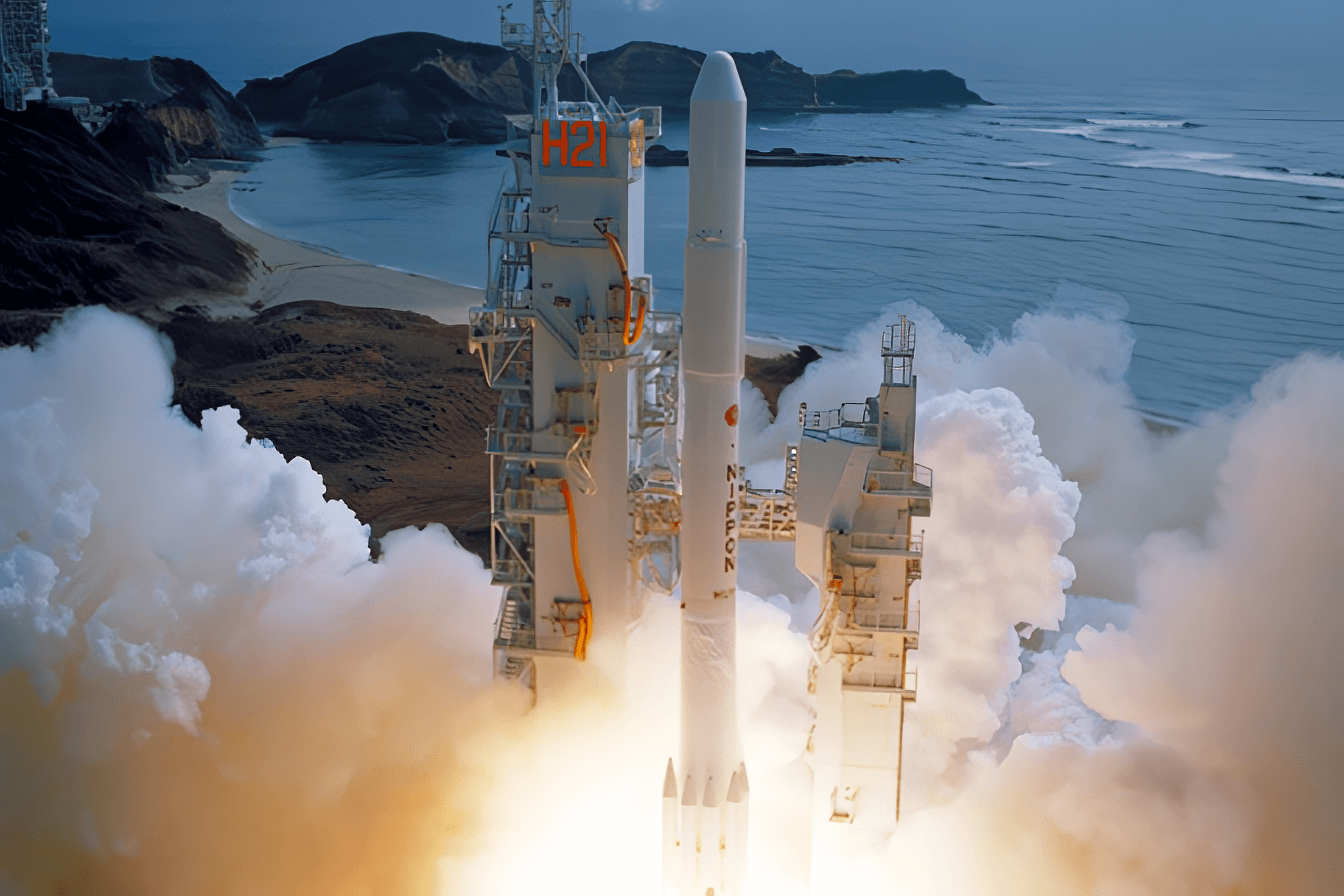
H-1
In-activeMitsubishi Heavy Industries (MHI)
Aug. 12, 1986
Description
The H-1 was a Japanese liquid-fuelled carrier rocket, consisting of a license-produced American First Stage and set of booster rockets and all-Japanese upper stages. It replaced the N-II and was subsequently replaced by the H-2 which has the same upper stages with a Japaense first stage.
Specifications
-
Minimum Stage
2 -
Max Stage
3 -
Length
42.0 m -
Diameter
2.44 m -
Fairing Diameter
2.44 m -
Launch Mass
142.0 T -
Thrust
―
Family
-
Name
H-1 -
Family
― -
Variant
I -
Alias
― -
Full Name
H-I
Payload Capacity
-
Launch Cost
― -
Low Earth Orbit
3200.0 kg -
Geostationary Transfer
Orbit
1100.0 kg -
Direct Geostationary
― -
Sun-Synchronous Capacity
―
Mitsubishi Heavy Industries
Commercial
President: Seiji Izumisawa
MHI 1884Mitsubishi Heavy Industries, Ltd. is a Japanese multinational engineering, electrical equipment and electronics company headquartered in Tokyo, Japan. MHI is one of the core companies of the Mitsubishi Group. MHI's products include aerospace components, air conditioners, aircraft, automotive components, forklift trucks, hydraulic equipment, machine tools, missiles, power generation equipment, printing machines, ships and space launch vehicles. Through its defense-related activities, it is the world's 23rd-largest defense contractor measured by 2011 defense revenues and the largest based in Japan.
H-1 | Fuyo 1
Mitsubishi Heavy Industries | JapanTanegashima Space Center, Japan
Feb. 11, 1992, 1:50 a.m.
Status: Launch Successful
Mission:
JERS 1 (Japanese Earth Resources Satellite) is an Earth Observation Satellite to cover the global land area for national land survey, agriculture, forestry, and fishery, environmental protection, disaster protection, and coastal monitoring, etc. focusing on observation around the world and resource exploitation.
Sun-Synchronous OrbitH-1 | Yuri 3B
Mitsubishi Heavy Industries | JapanTanegashima Space Center, Japan
Aug. 25, 1991, 8:40 a.m.
H-1 | Yuri 3A
Mitsubishi Heavy Industries | JapanTanegashima Space Center, Japan
Aug. 28, 1990, 9:05 a.m.
H-1 | Momo 1b
Mitsubishi Heavy Industries | JapanTanegashima Space Center, Japan
Feb. 7, 1990, 1:33 a.m.
H-1 | Himawari 4
Mitsubishi Heavy Industries | JapanTanegashima Space Center, Japan
Sept. 5, 1989, 7:11 p.m.
H-1 | Sakura 3B
Mitsubishi Heavy Industries | JapanTanegashima Space Center, Japan
Sept. 16, 1988, 9:59 a.m.
H-1 | Sakura 3A
Mitsubishi Heavy Industries | JapanTanegashima Space Center, Japan
Feb. 19, 1988, 10:05 a.m.
H-1 | Kiku 5
Mitsubishi Heavy Industries | JapanTanegashima Space Center, Japan
Aug. 27, 1987, 9:20 a.m.
Falcon 9
Starlink Group 11-14
Space Launch Complex 4E - Vandenberg SFB, CA, USAA batch of 28 satellites for the Starlink mega-constellation - SpaceX's project for space-based Internet communication system.
Falcon 9
Starlink Group 6-81
Space Launch Complex 40 - Cape Canaveral SFS, FL, USAA batch of 29 satellites for the Starlink mega-constellation - SpaceX's project for space-based Internet communication system.
Electron
The Nation God Navigates (iQPS Launch 5)
Rocket Lab Launch Complex 1B - Rocket Lab Launch Complex 1, Mahia Peninsula, New ZealandSynthetic aperture radar Earth observation satellite for Japanese Earth imaging company iQPS.
Ariane 62
Sentinel-1D
Ariane Launch Area 4 - Guiana Space Centre, French GuianaSentinel-1D carries an advanced radar technology to provide an all-weather, day-and-night supply of imagery of Earth’s surface as part of the Sentine…
Long March 7A
Yaogan 46
201 - Wenchang Space Launch Site, People's Republic of ChinaClassified Earth observation satellite officially reported as for "national resources/hydrology/meteorology surveying & disaster management" purposes.

